
Liquid and powdered extracts of myrrh with the highest levels of furanodienes on the market
Innovative extraction and patented pulverization techniques and molecular fractionation allow Calliero S.p.A. to achieve levels of furanodienes in liquid and powder extracts never achieved before.
CalMYR-L liquid extract and CalMYR-P powder extract are exclusive products of Calliero S.p.A. They are obtained from gum-resins collected from spontaneous Commiphora myrrha plants and produced both in liquid form with the highest standardized percentage of furanodienes (800 mg/g) on the market and in powder form, by using an patented process (Patent number 102022000008018) that brings the furanodienes content to 180 g/kg (18%), the highest value on the market.
The innovative molecular extraction and fractionation techniques, carried out without the use of organic solvents, and the patented pulverization process are developed internally by the R&D team in the laboratories of the Calliero S.p.A. Research Centre, a structure created to meet the growing need to supply standardized, high-quality products based on the most recent extraction and analytical technologies.

CalMYR-L and CalMYR-P are characterized by a high standardized content of the main furanodienes of myrrh: curzerene, furanoeudesma-1,3-diene and lindestrene, in addition to other bioactive furanodienes.

Our techniques allow to obtain standardized products.
ANALYTICAL TECHNIQUES
The identification of furanodienes, present in CalMYR-L and CalMYR-P, is carried out by gas chromatography coupled to triple quadrupole mass spectrometry (GCMS-QQQ), while the quantification is obtained by gas chromatography coupled to a flame ionization detector (GC- FID) through the use of internal standards. The search for toxins, pesticides and impurities is carried out by UHPLC-ESI and GC combined with a triple quadrupole mass detector. The R&D team has also developed a patented method for the pulverization of myrrh oil at high content of furanodienes.
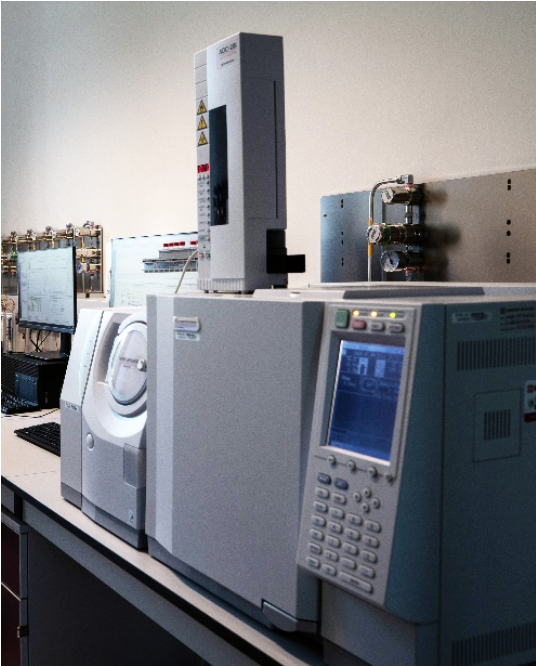
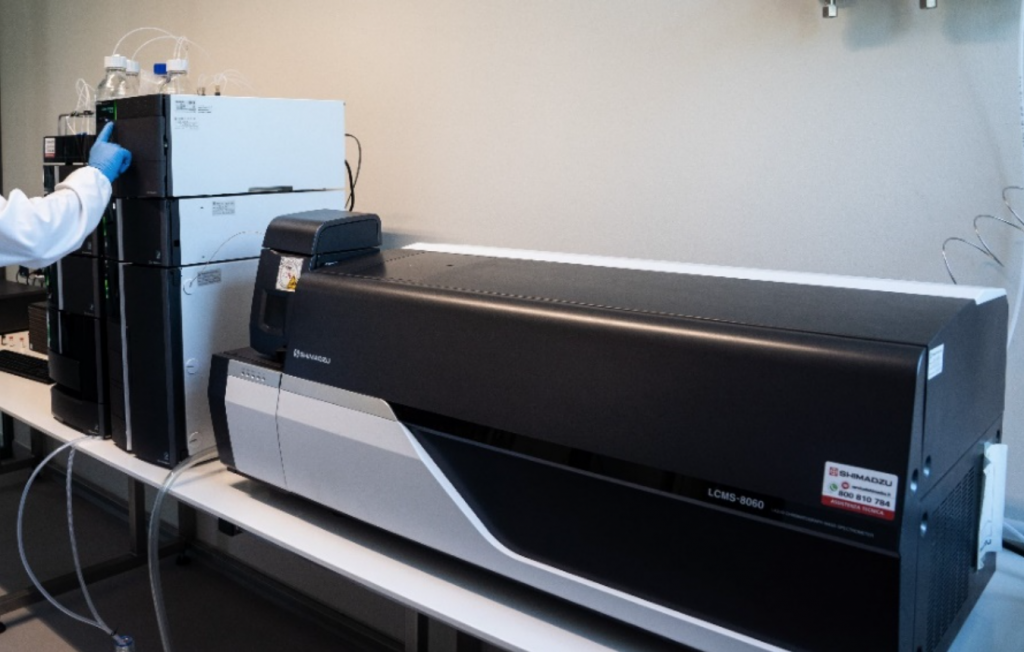
EXTRACTION TECHNIQUES AND PRODUCTION CAPACITY
The myrrh gum-resins are extracted with an extractor with a capacity of 150 kg/day and the yield in extract is 10 kg/day. On an annual basis, the production capacity is a few tons and is carried out entirely by Calliero S.p.A. in the Moretta (CN) Italy plant, without the use of intermediaries or the purchase of semi- finished products. High quality gum-resins are selected by the best manufacturing companies located in Somalia (Somaliland) and are shipped in batches of 20 tons in containers for extraction. The amount of gum-resins extracted allows a high standardization of the batches and a guarantee of production.
The extract is then subjected to molecular fractionation to increase the content of furanodienes and eliminate unwanted compounds.
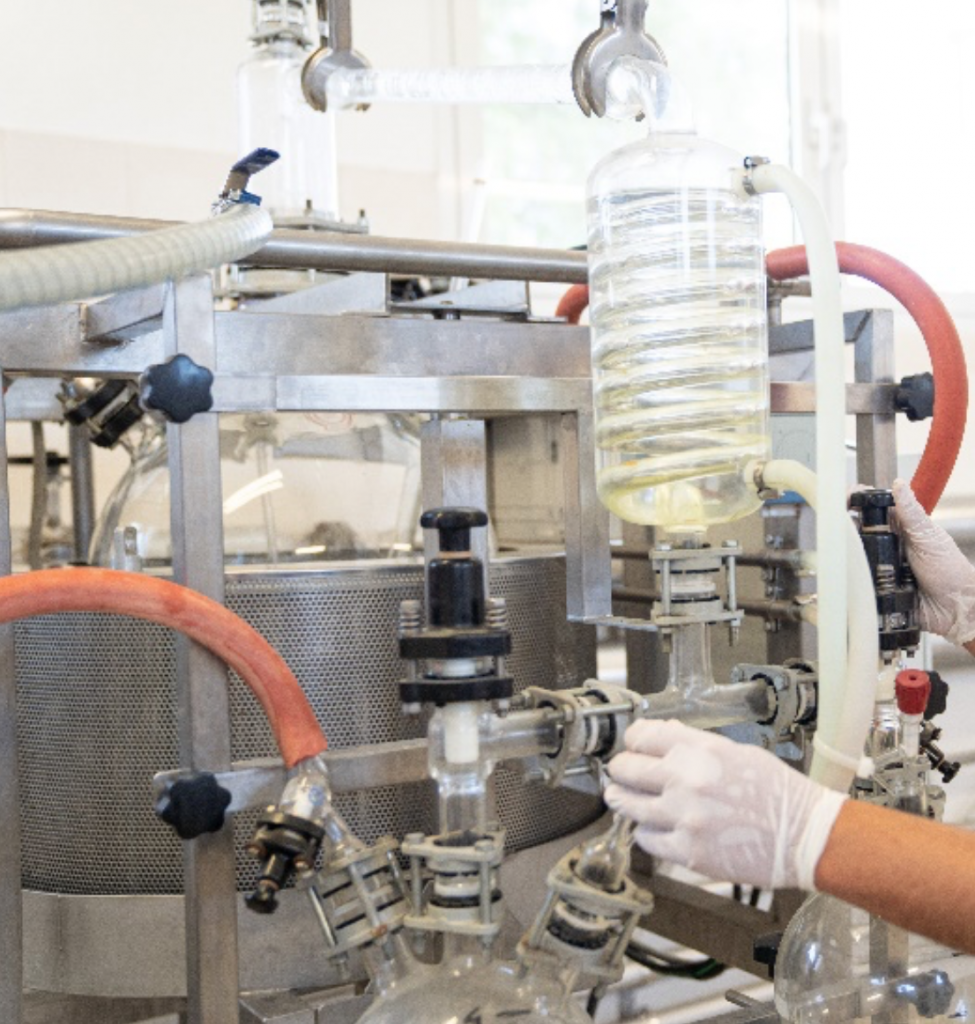
THE PROPERTIES OF MYRRH
The taxa belonging to the genus Commiphora (family Burseraceae) are divided into 150 species consisting of small trees or shrubs characterized by the presence of short and thorny branches, by the greyish bark and by the thick foliage.

The myrrh gum resins come out from lesions and superficial incisions made on the bark of the plant and appear as a yellowish liquid exudate. In contact with the air, the exudate solidifies and takes on a reddish- dark color with a characteristic aromatic, balsamic and pungent scent.
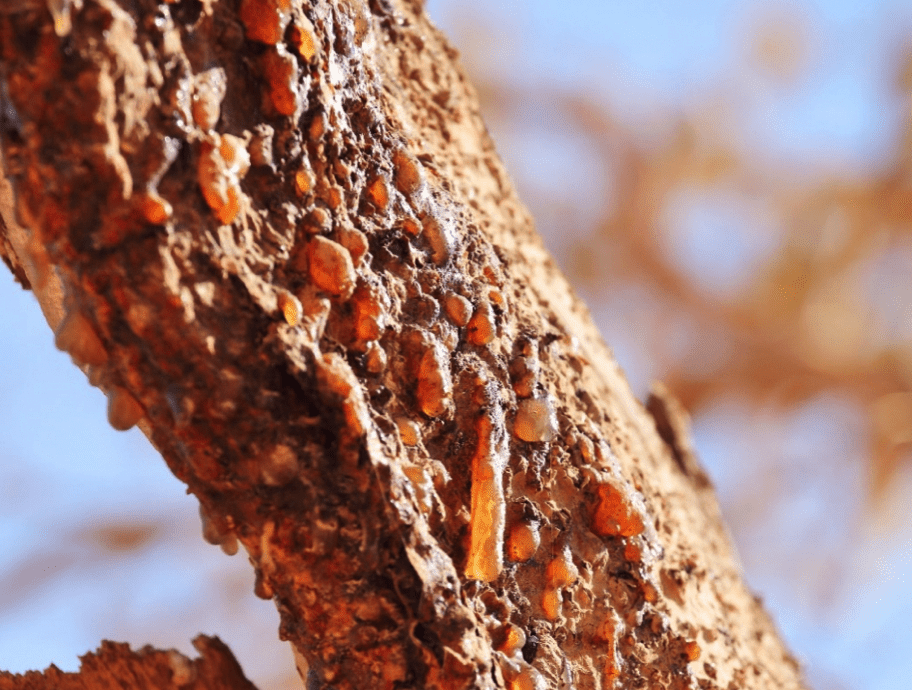
The oleogum-oresin contains 25–40% of resins, 3–8% of essential oil and is made up of 30 to 60% of a water-soluble rubber [African Pharmacopoeia, 1985; Newall, et al. 1996; WHO Monograph). This gum is made up of 20% proteins and 65% carbohydrates consisting of galactose, 4-O-methylglucuronic acid and arabinose. The main components of the essential oil are furanodienes.
Myrrh has long been used for the topical treatment of mild inflammation of the oral and pharyngeal mucosa [Braun et al., 1997], as a gargle or mouthwash for the treatment of aphthous ulcers, pharyngitis, tonsillitis, colds and gingivitis [Bradley et al., 1992]. In folk medicine it is used as an emmenagogue, expectorant and antidote for poisons and to inhibit blood coagulation. It is also used for the treatment of symptoms of menopause, arthritic pain, diarrhea, fatigue, jaundice and indigestion and applied topically for the treatment of burns and hemorrhoids [Farnsworth, 2001; El Ashry et al., 2003].
Of considerable importance is the discovery that myrrh furanodienes are able to exert anesthetic-local properties due to the selective and reversible inhibition of sodium channels, which causes a block of membrane depolarization with consequent interruption of nerve impulse transmission [ Dolara et al., 1996]. The analgesic effects of some components present in myrrh extracts against common pain symptoms, such as headache, muscle aches and pains deriving from febrile states, are of particular importance. As regards the mechanism of action of furanoeudesma-1,3-diene, the molecule is able to act at the level of the mu (µ) opioid receptors of the central nervous system and its effect is counteracted by opioid receptor antagonists such as naloxone [Dolara et al., 1996]. Not only has the neuroprotective effect of furanodienes been amply demonstrated [Xu et al. 2011], but the myrrh extracts have hepatoprotective properties through the attenuation of proinflammatory cytokines [Ahmad et al. 2015]. The myrrh sesquiterpenes are also known for their bioactivity in relation to Alzheimer’s disease [Yu et al. 2020] thanks also to their antioxidant properties [Alqahtani et al. 2019].
Further studies have also shown how a myrrh extract (containing a standardized titre of 4% furanodienes far lower than that of CalMYR-L or CalMYR-P) showed similar effects to some NSAIDs (e.g. diclofenac, ketoprofen, ibuprofen, paracetamol , tramadol and ketorolac) with which it was placed in direct comparison. Unfortunately, the reduced content of furanodienes used (4%) made it possible to obtain effects similar to NSAIDs only after long periods of treatment (20 days) [Germano et al., 2017].
Therefore, the high standardized content of bioactive furanodienes of CalMYR -L and CalMYR-P allow preparation of highly effective food supplements, allowing to reduce administration times and therefore to guarantee a quick result.
The high production capacity entirely carried out in the Calliero S.p.A. company allows to offer myrrh extracts with furanodiene concentrations unique on the market and with an excellent quality to price ratio.
PACKAGING
All products are delivered in high quality aluminium containers especially designed for packaging, transport and storage of value products. The containers are made of 1050A grade Aluminium with inner coating and available in sizes from 2 Kg to 25 Kg for powders and from 50 gr to 25 Kg for liquids. These containers not only guarantee an optimal tightness, but also a high level of chemical, microbiological and particle cleanliness.
Our delivery system is based on three main concepts:
Safety: Secured transport with a lever lock ring closure, nitrile (or silicone) gasket and an aluminum lid for powders and PP cap with tamper evident tear off ratchet ring and PE plug with tear off ring for liquids; high resistance and tightness even when exposed to high pressure differences; compatible with anti-tamper seals; no residue after use; excellent mechanical resistance against shocks, perforations and compressions caused during transport. Moreover, they are compliant to the European standard regulation for food contact.
User friendly: Easy to use and to empty with a 220 mm (8.66 in) wide open top for powders and from 22 mm to 46 mm (0.9 to 1.8 in) bottle neck for liquids; easily washable and sterilizable. The liquid containers allow precise drop, easy pouring and a standard closure. Bottles from 1 to 25 Kg are equipped with a rotating handle that helps to manipulate the bottles.
Environmentally friendly: 100% recyclable high scrap value aluminum monoblock.
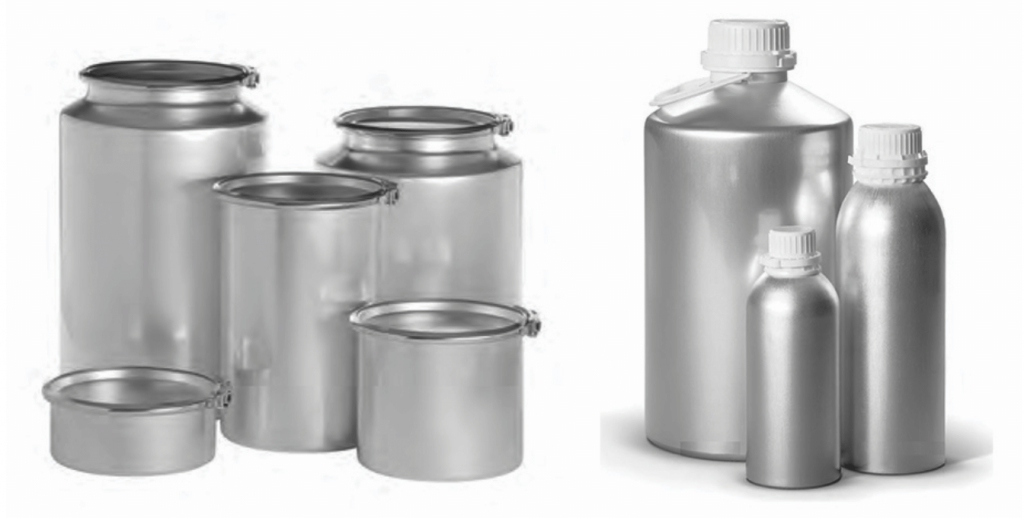
Ahmad, A. et al. (2015) Hepatoprotective effect of Commiphora myrrha against D-GalN/LPS-induced hepatic injury in a rat model through attenuation of pro inflammatory cytokines and related genes. Pharmaceutical Biology Vol. 53, pp. 1759-1767.
Alqahtani, A.S. et al. (2019) The influence of variations of furanosesquiterpenoids content of commercial samples of myrrh on their biological properties. Saudi Pharmaceutical Journal Vol. 27 pp. 981-989.
Bradley, P.R. (1992) British herbal compendium. Vol. 1. Bournemouth, British Herbal Medicine Association, 1992.
Braun R et al. (1997) Standard licensing of finished drugs – text and commentary. Stuttgart, Deutscher Apotheker Verlag.
Dolara P., et al. (1996) Analgesic effects of myrrh. Nature, vol. 379, pp. 29-29.
El Ashry, E. S. H. et al. (2003) Components, terapeutic value and uses of myrrh. Pharmazie, Vol 58, pp: 163–168.
Farnsworth, N.R. (2001) NAPRALERT database. Chicago, IL, University of Illinois at Chicago, 10 January 2001 production (an online database available directly through the University of Illinois at Chicago or through the Scientifi c and Technical Network (STN) of Chemical Abstracts Services).
Germano, A. et al. (2017) A pilot study on bioactive constituents and analgesic effects of MyrLiq®, a Commiphora myrrha extract with a high furanodiene content. (2017) BioMed Res Int Article ID 3804356
Newall, C.A. et al. (1996) Herbal medicines, a guide for health-care professionals. London, The Pharmaceutical Press.
WHO Monograph: Gummi Myrrha, pp. 247-256.
Xu, J. et al. (2011) Sesquiterpenoids from the Resinous Exudates of Commiphora myrrha and Their Neuroprotective Effects. Planta Medica Vol 77 , pp.2023-2028.
Yu, Y.F. et al. (2020) Cadinane-type sesquiterpenes from the resinous exudates of Commiphora myrrha and their anti-Alzheimer’s disease bioactivities. Fitoterapia Vol. 142 art. 104536.
